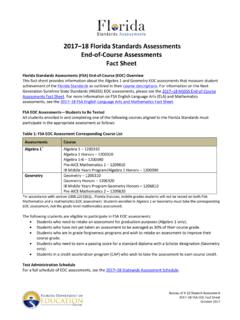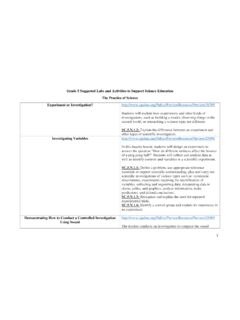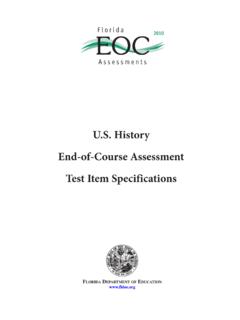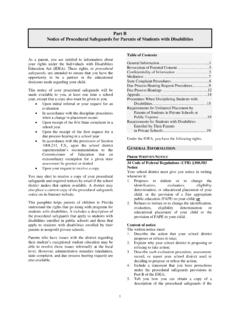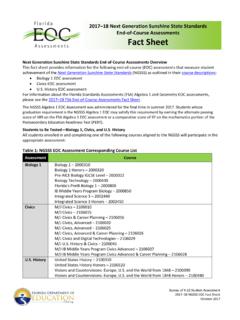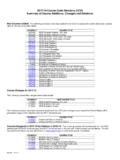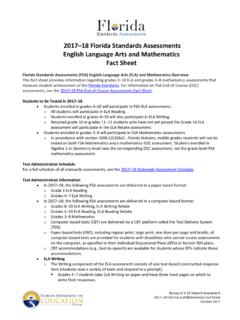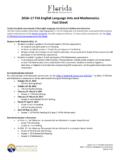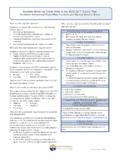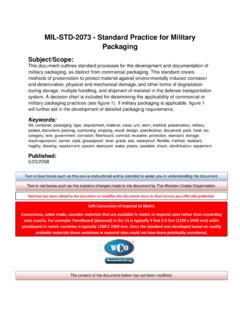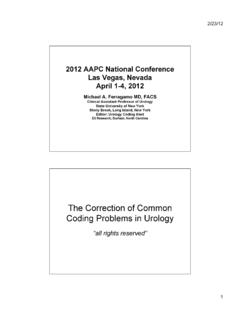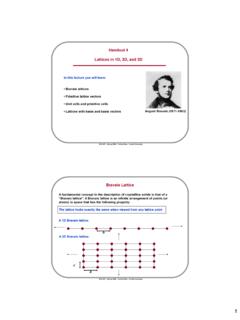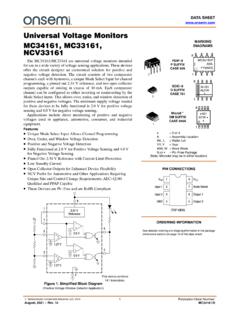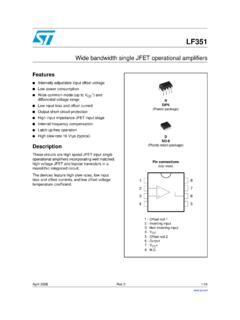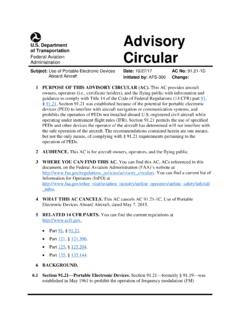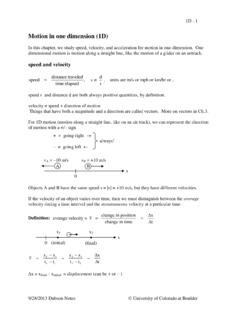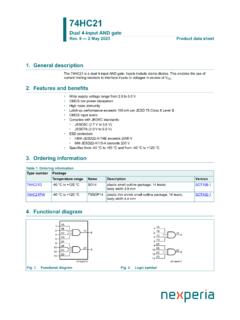Transcription of Mathematics Florida Standards (MAFS) Grade 7
1 Mathematics Florida Standards (MAFS). Grade 7. Domain: RATIOS & PROPORTIONAL RELATIONSHIPS. Cluster 1: Analyze proportional relationships and use them to solve real-world and mathematical problems. (Major Cluster). Don't sort clusters from Major to Supporting, and then teach them in that order. To do so would strip the coherence of the mathematical ideas and miss the opportunity to enhance the major work of the Grade with the supporting clusters. STANDARD CODE STANDARD. Compute unit rates associated with ratios of fractions, including ratios of lengths, areas and other quantities measured in like or different units.
2 For example, if a person walks 1/2 mile in each 1/4 hour, compute the unit rate as the complex fraction 1/2/1/4 miles per hour, equivalently 2 miles per hour. Cognitive Complexity: Level 2: Basic Application of Skills & Concepts Recognize and represent proportional relationships between quantities. a. Decide whether two quantities are in a proportional relationship, , by testing for equivalent ratios in a table or graphing on a coordinate plane and observing whether the graph is a straight line through the origin. b. Identify the constant of proportionality (unit rate) in tables, graphs, equations, diagrams, and verbal descriptions of proportional relationships.
3 C. Represent proportional relationships by equations. For example, if total cost t is proportional to the number n of items purchased at a constant price p, the relationship between the total cost and the number of items can be expressed as t = pn. d. Explain what a point (x, y) on the graph of a proportional relationship means in terms of the situation, with special attention to the points (0, 0). and (1, r) where r is the unit rate. Cognitive Complexity: Level 2: Basic Application of Skills & Concepts Use proportional relationships to solve multistep ratio and percent problems. Examples: simple interest, tax, markups and markdowns, gratuities and commissions, fees, percent increase and decrease, percent error.
4 Cognitive Complexity: Level 2: Basic Application of Skills & Concepts | #FLStandards 2014, Florida Department of Education. All Rights Reserved. Domain: THE NUMBER SYSTEM. Cluster 1: Apply and extend previous understandings of operations with fractions to add, subtract, multiply, and divide rational numbers. (Major Cluster). Don't sort clusters from Major to Supporting, and then teach them in that order. To do so would strip the coherence of the mathematical ideas and miss the opportunity to enhance the major work of the Grade with the supporting clusters. STANDARD CODE STANDARD. Apply and extend previous understandings of addition and subtraction to add and subtract rational numbers; represent addition and subtraction on a horizontal or vertical number line diagram.
5 A. Describe situations in which opposite quantities combine to make 0. For example, a hydrogen atom has 0 charge because its two constituents are oppositely charged. b. Understand p + q as the number located a distance |q| from p, in the positive or negative direction depending on whether q is positive or negative. Show that a number and its opposite have a sum of 0 (are additive inverses). Interpret sums of rational numbers by describing real- world contexts. c. Understand subtraction of rational numbers as adding the additive inverse, p q = p + ( q). Show that the distance between two rational numbers on the number line is the absolute value of their difference, and apply this principle in real-world contexts.
6 D. Apply properties of operations as strategies to add and subtract rational numbers. Cognitive Complexity: Level 2: Basic Application of Skills & Concepts Apply and extend previous understandings of multiplication and division and of fractions to multiply and divide rational numbers. a. Understand that multiplication is extended from fractions to rational numbers by requiring that operations continue to satisfy the properties of operations, particularly the distributive property, leading to products such as ( 1)( 1) = 1 and the rules for multiplying signed numbers. Interpret products of rational numbers by describing real-world contexts.
7 B. Understand that integers can be divided, provided that the divisor is not zero, and every quotient of integers (with non-zero divisor) is a rational number. If p and q are integers, then (p/q) = ( p)/q = p/( q). Interpret quotients of rational numbers by describing real-world contexts. c. Apply properties of operations as strategies to multiply and divide rational numbers. d. Convert a rational number to a decimal using long division; know that the decimal form of a rational number terminates in 0s or eventually repeats. Cognitive Complexity: Level 2: Basic Application of Skills & Concepts Solve real-world and mathematical problems involving the four operations | #FLStandards 2014, Florida Department of Education.
8 All Rights Reserved. with rational numbers. Cognitive Complexity: Level 2: Basic Application of Skills & Concepts Domain: EXPRESSIONS & EQUATIONS. Cluster 1: Use properties of operations to generate equivalent expressions. (Major Cluster). Don't sort clusters from Major to Supporting, and then teach them in that order. To do so would strip the coherence of the mathematical ideas and miss the opportunity to enhance the major work of the Grade with the supporting clusters. STANDARD CODE STANDARD. Apply properties of operations as strategies to add, subtract, factor, and expand linear expressions with rational coefficients.
9 Cognitive Complexity: Level 1: Recall Understand that rewriting an expression in different forms in a problem context can shed light on the problem and how the quantities in it are related. For example, a + = means that increase by 5% is the same as multiply by . Cognitive Complexity: Level 2: Basic Application of Skills & Concepts Cluster 2: Solve real-life and mathematical problems using numerical and algebraic expressions and equations. (Major Cluster). Don't sort clusters from Major to Supporting, and then teach them in that order. To do so would strip the coherence of the mathematical ideas and miss the opportunity to enhance the major work of the Grade with the supporting clusters.
10 STANDARD CODE STANDARD. Solve multi-step real-life and mathematical problems posed with positive and negative rational numbers in any form (whole numbers, fractions, and decimals), using tools strategically. Apply properties of operations to calculate with numbers in any form; convert between forms as appropriate; and assess the reasonableness of answers using mental computation and estimation strategies. For example: If a woman making $25 an hour gets a 10% raise, she will make an additional 1/10 of her salary an hour, or $ , for a new salary of $ If you want to place a towel bar 9 3/4 inches long in the center of a door that is 27 1/2 inches wide, you will need to place the bar about 9 inches from each edge; this estimate can be used as a check on the exact computation.
